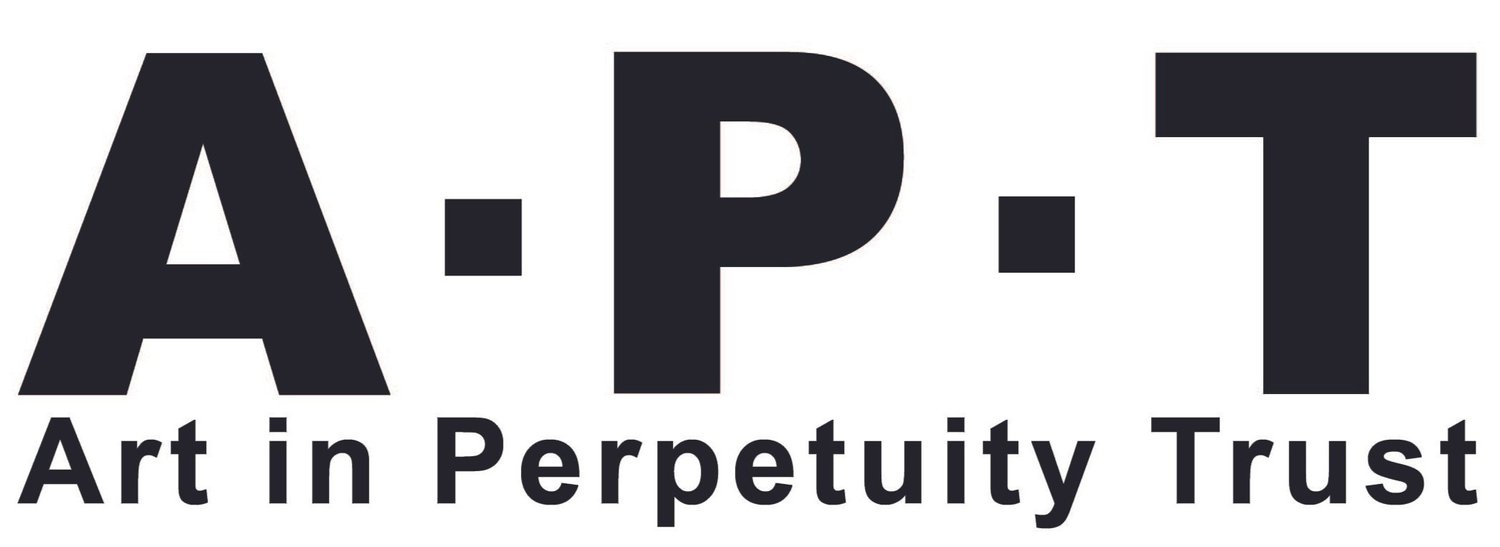RICHARD LAWRENCE
Richard Lawrence works with wood, with clay and with found images, attempting to materialize a presence out of an illusion. He is one of the founders of APT.
His work occupies the ground between figuration and abstraction. Whilst acknowledging the formal approaches of later modernism he is more concerned with the world as experienced, allowing the process of making to inform the object made.
A structuralist approach may create art that defines itself in terms of itself, or is self-referential to a degree. Lawrence’s work is more akin to the mimesis of early or prehistoric artists which allows the form of the material – a bone or an antler, a curve in the roof of a cave – to add to the form of the object made. It is a reciprocal process in which the form in the hand draws out the object in the mind’s eye revealing more of its character than the mind alone could produce. But the character of a thing is not only physical in nature, it includes the values we associate with it – a seal pup may appear different to an Inuit hunter than to an urban campaigner; the romance of the Message in a Bottle changes when the plastic bottle itself becomes the message. How we read a thing is as important as the context in which we read it.
Walrus Head, 2015 Plaster
45 x 28 x 32cm
Richard Lawrence is very much a part of his environment, drawing creative energy from the natural world still present in the city as much as from his concern at the damage wrought by humans in the wider world. He is as likely to find inspiration in a news image of a forest fire as in the riverbed of the creek at low-tide, and his response is in part dismay at the loss, part wonder at the endurance. We live in a time of reciprocities.
“Those early artists lived in a world in which humans and animals were interdependent whereas I’m born into a time of extinctions.” Context is everything.
If the form and texture of the caves of Altamira or Lascaux were used to bring bison to life, in Richard Lawrence’s work the opposite is often true. In the piece (Walrus head and/or Seal) the folds and curves and the nature of the animal’s hide is made with the ribs of a plastic bottle. By using found objects, waste products as tools to work the surface of the object he imposes on the animal its own demise – texture made by context in an act of both creation and extinction.
This give and take is present too in his print work. In the wood-cut process the image is in part contained within the grain of the block even before the image is found. There is then that process of association, at the root of the modernist aesthetic, in which the found object reveals something other than itself as well as something about itself. In the recent Bushfire series, the rising heat and flames were contained within the grain of the wood prefiguring (albeit remotely) the fire that destroyed it.
It should be said at this point that Lawrence only uses found or managed wood, often as a by-product of sculpture commissions for public spaces both in the city and in south London’s many parks. These installations are often large and always heavy, requiring a fine understanding of balance and engineering to make them work, a factor that is also true in the studio with the larger clay sculptures in which the animal and its armature have become one as if it were reluctant to leave the site of its making.
If there is one idea present in all of Richard Lawrence’s work it has to do with interdependence - in the act of making, both the maker and that which is made are changed. In his choice of images – a polar bear making its final leap, a helicopter bombing a fire with water, a line of unknown Iraqi dead - we are reminded of both our dependence on and our responsibility for the world in which we live
Bushfire III, 2020 Woodcut print, 41 x 30cm
Bushfire II, 2020 Woodcut print, 43 x 30cm
Bushfire I, 2020 Woodcut print 41 x 30cm
Leaping Bear, 2012 Plaster and wooden chair, 92 x 70 x 42cm
Killer Whale, 2015 Plaster, 108 x 125 x 80cm
Seal, 2015 Plaster, 58 x 28 x 35cm
LINKS
deptfordlawrence1 > Instagram
Lawrence’s public art commissions can be found in Margaret Macmillan Park in Deptford, Cornmill Gardens in Lewisham and Fordham Park in New Cross. Following three artist’s residencies he also has work in China including the Zhongkun Group (2007) in Beijing.
A number of larger pieces can be seen in The Sculpture Park, Farnham, Surrey.
A full CV is available here
Polar Bear, 2016 Bronze, 65 x 100 x 45cm
Flock, 2017, Carved oak
Installed at Baltimore Wharf, London Docklands
Flock 2017, detail.










